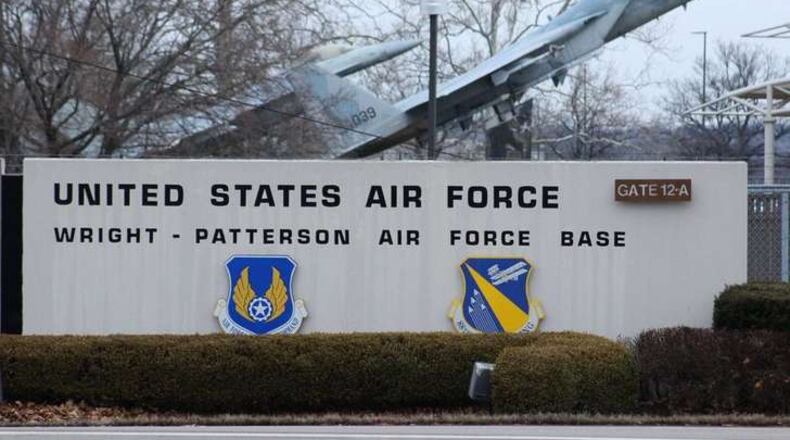Wright-Patterson environmental authorities face a Friday deadline to tell the Ohio Environmental Protection Agency how they will more broadly test ground and surface water and soil sediment for contamination from a firefighting foam. The foam has polyfluoroalkyl substances (PFAS) that could have adverse health effects on fetuses and bottle-fed children, according to the U.S. EPA.
‘Urgency’ to act quickly
In a Sept. 30 letter, Ohio EPA Director Craig W. Butler urged base commander Col. Bradley W. McDonald to act quickly.
“Given the urgency expressed by Ohio EPA and the city of Dayton to more completely understand the issues of PFAS contamination at WPAFB, it is very important that the agreed monitoring well work be completed as soon as possible,” Butler wrote to McDonald.
The state EPA director added the agency “reserves the right to take all steps necessary” to put the agreement in place to ensure Dayton residents and Wright-Patterson workers “are appropriately protected.”
Firefighters sprayed the suppressant, known as Aqueous Film Forming Foam, to fight aircraft fires and used it in training for decades on the sprawling military installation. Wright-Patterson shut down two drinking production wells in Area A in May. Sampling showed the drinking water wells exceeded new, lower U.S. EPA threshold standards for lifetime exposure to perfluoroctanesulfonic acid (PFOS) and perfluorooctanic acid (PFOA), compounds found in the firefighting foam. The wells remained closed under extended Ohio EPA emergency orders.
In August, Wright-Patterson lifted a drinking water advisory for pregnant women and infants imposed in May. The advisory was lifted when tests showed the PFOS and PFOA were below the threshold, officials said.
For the first time, environmental officials took surface water samples this summer to track the extent of contamination.
Tests of the Mad River found two areas on tributaries near the main airfield at Wright-Patterson that exceeded the U.S. EPA advisory threshold of 70 parts per trillion of polyfluoroalkyl substances, according to Ohio EPA spokesman James Lee. Firefighters used the sites to train, Vanover said.
Sampling in August showed one site measured 82 points per trillion of PFOA; the other 590 parts per trillion for the same compound, Ohio EPA data shows. However, those threshold standards were set for drinking water and do not apply to surface water, Lee said in an email.
The city of Dayton has 25 drinking water wells on Roher’s Island downstream from the base as part of a Mad River wellfield network, according to state and city officials. The city does not draw drinking water from the river, but water from the river is diverted into lagoons that recharge the aquifer, according to Michele Simmons, city environmental manager.
She said Tuesday none of the contaminants have been detected in the city’s well fields or its water distribution system that serves 400,000 customers.
In June, the city shut down seven water production wells closer to the base at Huffman Dam as a “precautionary measure.”
Ohio EPA, Dayton want expanded testing
In the Sept. 30 letter, Butler also urged Wright-Patterson to reconsider a “unilateral decision” not to sample Mad River sediments off-base. Sampling was still planned on river tributaries within the base boundary, Ohio EPA said. The agency has urged tests of all previously agreed to areas be conducted by Saturday.
“If (Wright-Patterson) refuses to do so, the Ohio EPA reserves the right to perform sediment sampling,” Butler wrote.
The city of Dayton agreed with the Ohio EPA, Simmons said. “The sediments can pose a potential contamination threat because of their proximity between the surface water and groundwater,” she wrote in an email.
Under a $347,000 deal, Texas-headquartered CB&I Federal Services LLC will drill the seven additional groundwater test wells, according to Wright-Patterson. The company will sample the new wells and 22 others once a quarter for a year. A plan to add an eighth well was scrapped because the site was on a steep riverbank in a heavily wooded area prone to flooding, according to a base spokeswoman.
A timeline outlining when the 50 additional wells would be installed under a separate contract with another company was not available Tuesday.
The Air Force also has a $29 million plan to replace existing AFFF supplies in fire stations with a new, more environmentally friendly foam at all of its bases. After a Wright-Patterson firefighter was injured in a training exercise last fall when the foam sprayed at high pressure into his eyes, the base's civilian firefighting force balked at replacing it themselves. A contractor was hired to under a $4,000 agreement to do the work instead. The injured firefighter remains off the job because of his injuries, a union official said Tuesday.
About the Author
